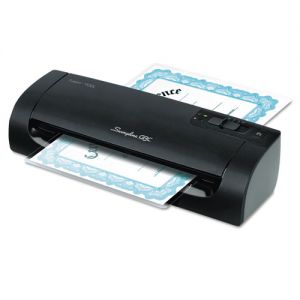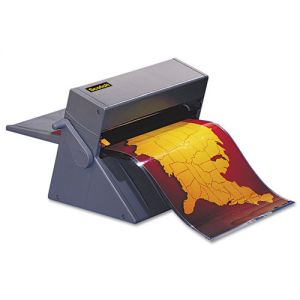Look around at all the papers you've
got on and overlooking your desk. How about the entire office, like
something on a billboard or crucial information resigned to a Post-It
note? Some of that's important, right? Shouldn't there be more care
taken to preserve this information, at least to showcase it and
announce that yes, this is significant? It's the sort of thing
begging to be laminated.
A laminator is one of those pieces of
equipment around the office that everybody is aware of, but rarely
gets used to its full potential. Part of the issue is that until you
actually sit down and use a laminating machine, the concept of
permanently encasing something in plastic seems expensive,
time-consuming and complicated. None of these are true.
There are three types of laminators-hot, cool and roll. Hot and cool laminators have the same external
mechanics, where you insert the item to be laminated into a special
pre-sized pouch and insert the pouch into the machine. That's it. Hot
laminators use a thermal adhesive and typically create the strongest
bond, while cold laminators use a pressure-sensitive adhesive and are
recommended when the contents being laminated might melt or bleed in
high temperatures (such as ink). Some machines even allow you to
choose between hot and cool lamination.
The only choice to make is the
thickness of your laminating pouch. Pouches are available in
different thicknesses (measured in mil) and, depending on the maximum
thickness your laminator will allow, you can choose how bendy or
rigid you want the finished prouct to be.
With roll laminators, you don't need
pouches as the film is already loaded in the machines. With many of
these, documents are loaded in and cranked manually, making it a
little trickier to get a perfect, smooth lamination. The advantages
are that, like the cool laminator, there's no risk of melting ink and
since there are no pouches to worry about, you can laminate longer
items like banners.





